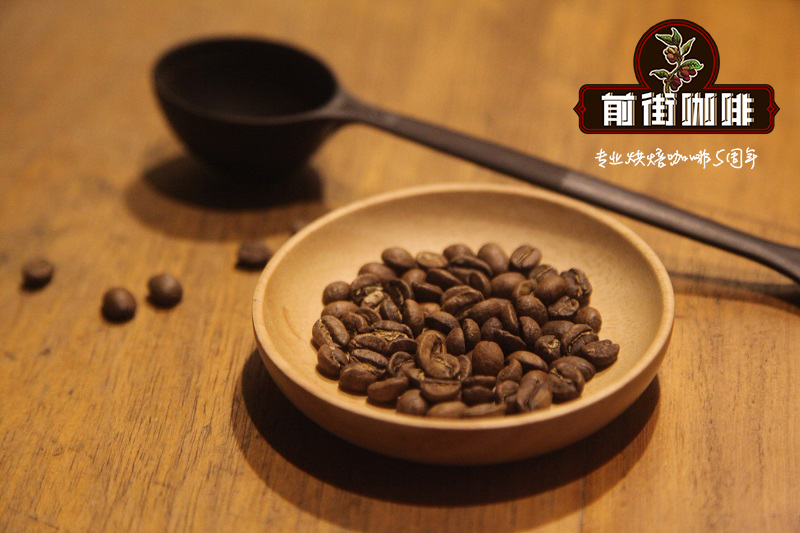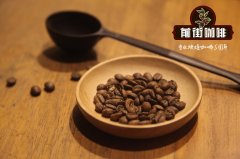Which country in Africa coffee good Kenya coffee beans characteristics delicate taste up sour fragrance

Professional coffee knowledge exchange more coffee bean information please follow the coffee workshop (Wechat official account cafe_style)
Qianjie-Kenyan Coffee introduction
African bean flavor: Ethiopian coffee has a strong orange flavor, while Kenya coffee has strong raspberry aromas, sour aromas of black plum juice and grapefruit, and sweet sugarcane aromas. The orange aroma of Ethiopian coffee and the raspberry flavor of Kenyan coffee are the most important features of African beans, and they are also the most attractive to coffee fans.
Altitude, geology, latitude, treatment methods and varieties have made Kenyan coffee a heavyweight in the boutique world.
Altitude, latitude, geology: the equator runs through Kenya, and the border is just within ten degrees of north and south latitude. Belonging to tropical producing areas, there are two rainy seasons every year, with two harvests, with 60% concentrated from October to December and another 40% from June to August. Coffee is mainly grown in volcanic land around 1600-2100 meters above sea level from the capital Narobi to the mountains of Kenya.
This height is suitable for the development of coffee bean flavor, because the mountain temperature is lower, the growth is slow, the aroma components of coffee beans have been fully developed, the sour taste is more obvious, and the texture is harder. This fertile moonbend-shaped coffee area is the main producer of Kenyan boutique beans.
The fermentation time of Central and South American beans in the sink rarely exceeds 36 hours, but the washing time in Kenya is as long as 72 hours. After 30 to 48 hours of fermentation, the coffee beans with shell beans are removed from the sink, and the pectin layer on the surface is removed. Another 24 hours of clean water immersion is required. Drying is put on a special grid to dry, because it is off the ground, and the shell beans are placed on the net, which helps to ventilate, moistureproof and evenly dry, so it is not easy to absorb the soil smell on the ground.
The Kenyan coffee bean washing tank has two layers, the process is as follows: in the evening, the defective coffee fruit is removed, the peel is removed, and then the sticky shell beans are removed, most of the pectin is removed, and then it is fermented twice in the lower clean pool, and then the recycled water is updated every few hours to avoid breeding mold; then it is introduced into the washing ditch to remove the residual pectin. This is not over, the washed beans with shells need to be soaked in the clean pool for more than 12 hours before drying and dehydration. With so much industrial waste, no wonder Kenyan coffee tastes so delicate.
In short: Qianjie is a coffee research hall, happy to share the knowledge about coffee with you, we share unreservedly just to make more friends fall in love with coffee, and there will be three low-discount coffee activities every month. The reason is that Qianjie wants to make more friends drink the best coffee at the lowest price, which has been Qianjie's tenet for 6 years!
END
Important Notice :
前街咖啡 FrontStreet Coffee has moved to new addredd:
FrontStreet Coffee Address: 315,Donghua East Road,GuangZhou
Tel:020 38364473
- Prev

Coffee bean producing area Africa is a world-famous boutique coffee producing area
Professional coffee knowledge exchange more coffee bean information please follow the coffee workshop (Wechat official account cafe_style) front street-Africa coffee producing area introduction in the geographical point of view, coffee belt is mainly distributed in Africa, Asia and America, the coffee characteristics of each continent is different. Coffee in Africa, for example, thinks of its unique floral and fruit flavors; Africa is just like everyone else.
- Next

The characteristics of African coffee beans are famous for their acidity and aroma of Kenyan coffee.
Professional coffee knowledge exchange more coffee bean information please follow the coffee workshop (Wechat official account cafe_style) front street-Kenya Coffee introduction Kenya's full name the Republic of Kenya is located in East Africa, the equator runs across the middle, East Africa's Great Rift Valley stretches north and south. Somalia to the east, Tanzania to the south, Uganda to the west, Ethiopia and Sudan to the north, and India to the southeast.
Related
- Beginners will see the "Coffee pull flower" guide!
- What is the difference between ice blog purified milk and ordinary milk coffee?
- Why is the Philippines the largest producer of crops in Liberia?
- For coffee extraction, should the fine powder be retained?
- How does extracted espresso fill pressed powder? How much strength does it take to press the powder?
- How to make jasmine cold extract coffee? Is the jasmine + latte good?
- Will this little toy really make the coffee taste better? How does Lily Drip affect coffee extraction?
- Will the action of slapping the filter cup also affect coffee extraction?
- What's the difference between powder-to-water ratio and powder-to-liquid ratio?
- What is the Ethiopian local species? What does it have to do with Heirloom native species?

